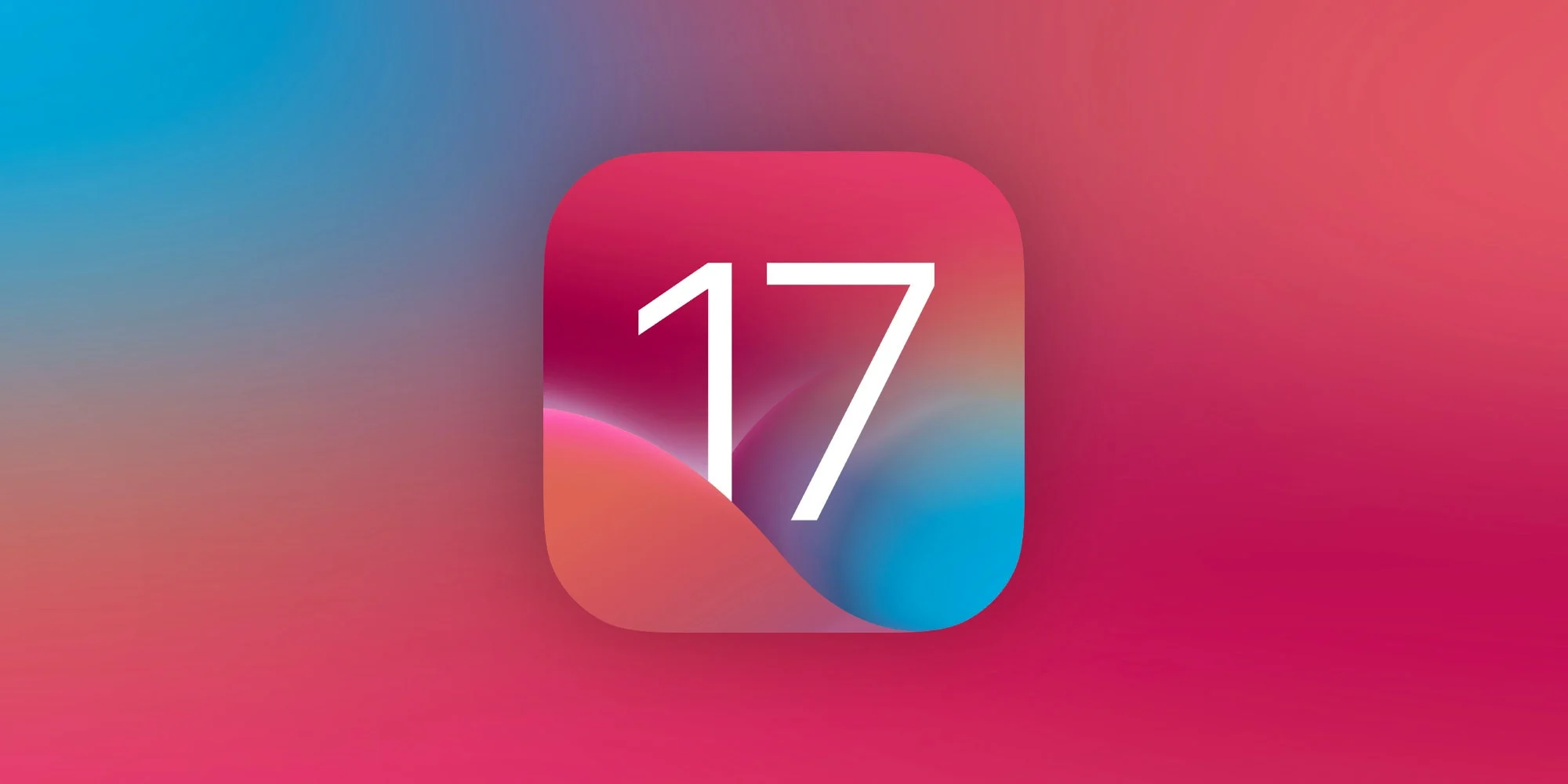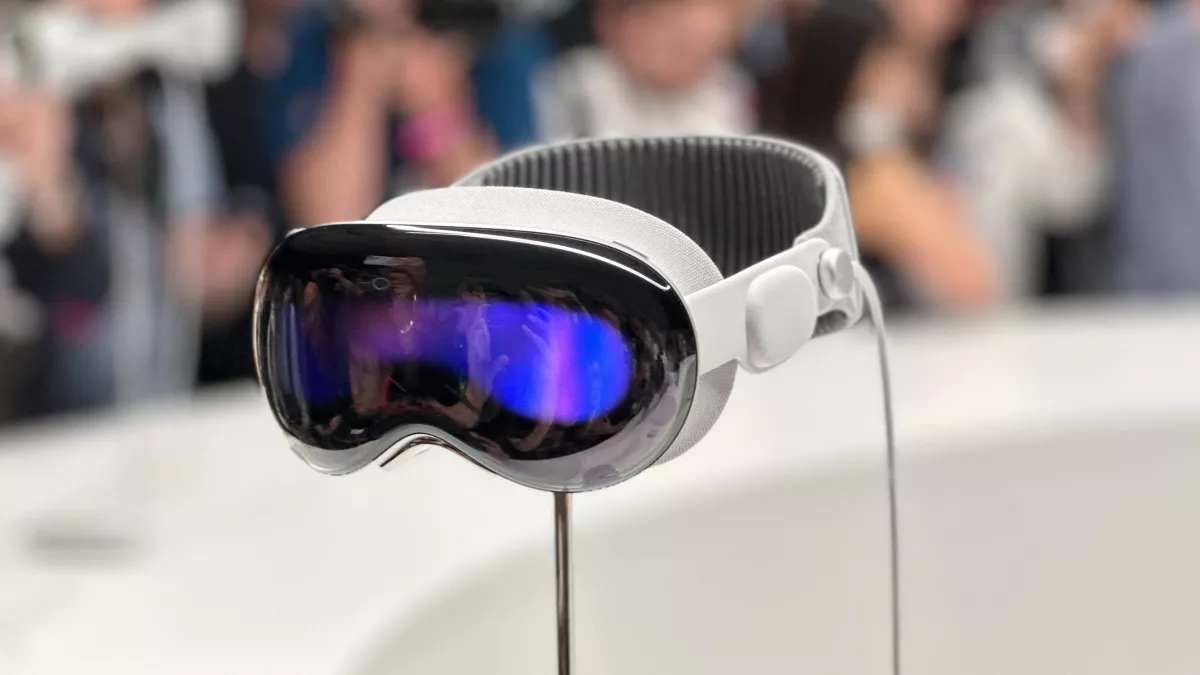
Apple announced iOS 17, the next major update to the iPhone operating system, bringing numerous new features, including NameDrop, StandBy mode, more Lock Screen customization options, and a smarter keyboard. But not all of these features will work with every iPhone model supported by iOS 17. Read on as we detail which features work with which iPhones.
First of all, iOS 17 changes requirements compared to iOS 16, which works with iPhone 8 and later. With iOS 17, Apple is dropping support for the iPhone 8, iPhone 8 Plus, and iPhone X, so the minimum requirement to install the update is to have an iPhone XR or later.
Live Voicemail
Live Voicemail transforms the way users interact with Visual Voicemail, which lets you access your mailbox from a message list instead of having to call a number. With iOS 17, voicemails are transcribed in real time on the Lock Screen. However, while this feature works with any iPhone running iOS 17, it’s only available in the US and Canada.
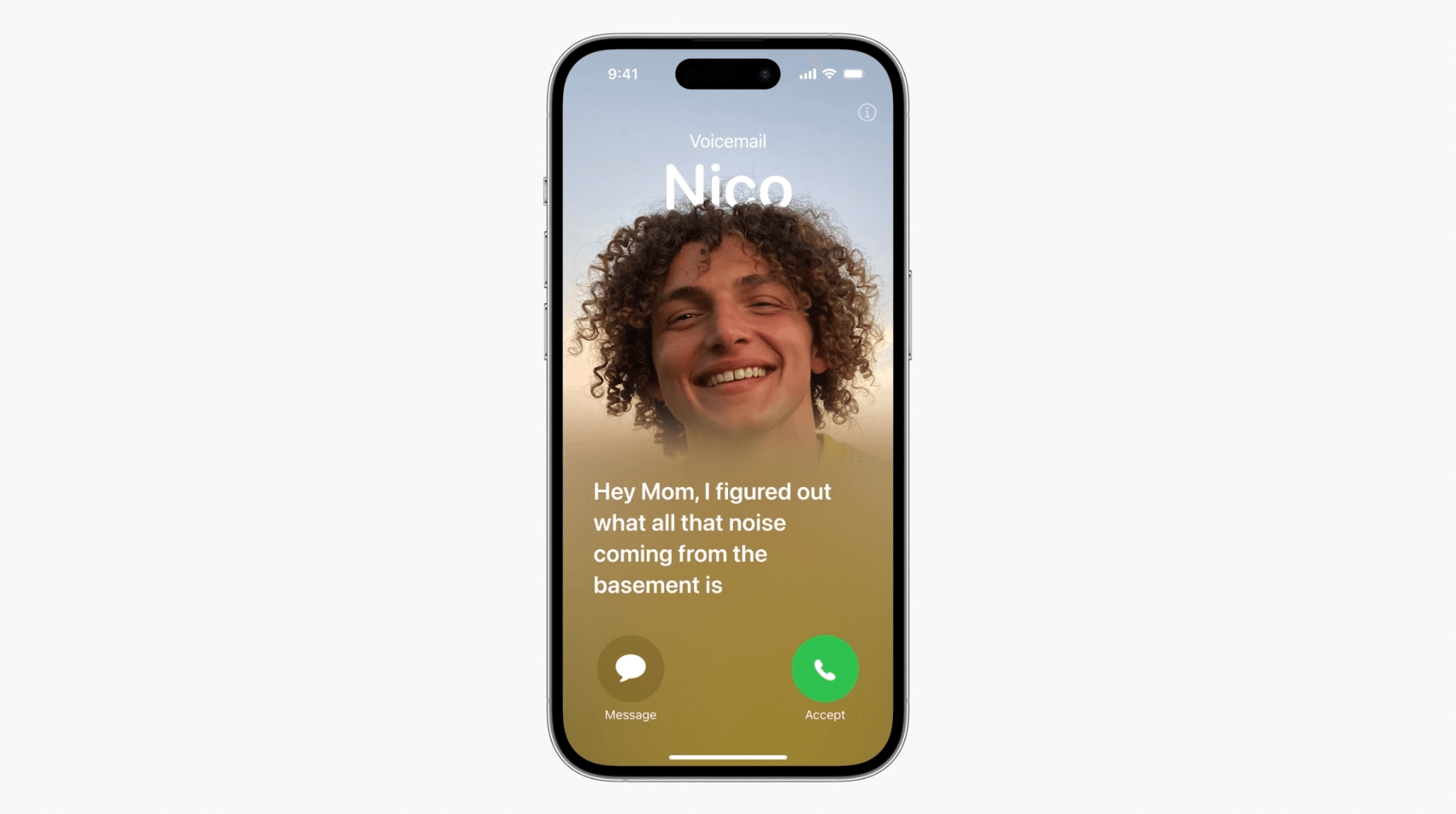
3D Reactions in FaceTime
FaceTime has a lot of new features with iOS 17. For example, users can leave a video message when someone misses their call. There are also new 3D reactions that detect your hand movements to show effects such as hearts, confetti, and fireworks. This, however, requires an iPhone 12 or later.
FaceTime on Apple TV
With both iOS 17 and tvOS 17, users can wirelessly connect their iPhone to the Apple TV to start a FaceTime call on the big screen. This feature also works with any iPhone model running iOS 17 but requires a second-generation (2021) Apple TV 4K or later.

NameDrop
With NameDrop in iOS 17, users can share their contact with other iPhone users just by holding it close to the other person’s iPhone. This feature is available for every iPhone model running iOS 17. It also works with Apple Watch, but only for Series 6 and later.
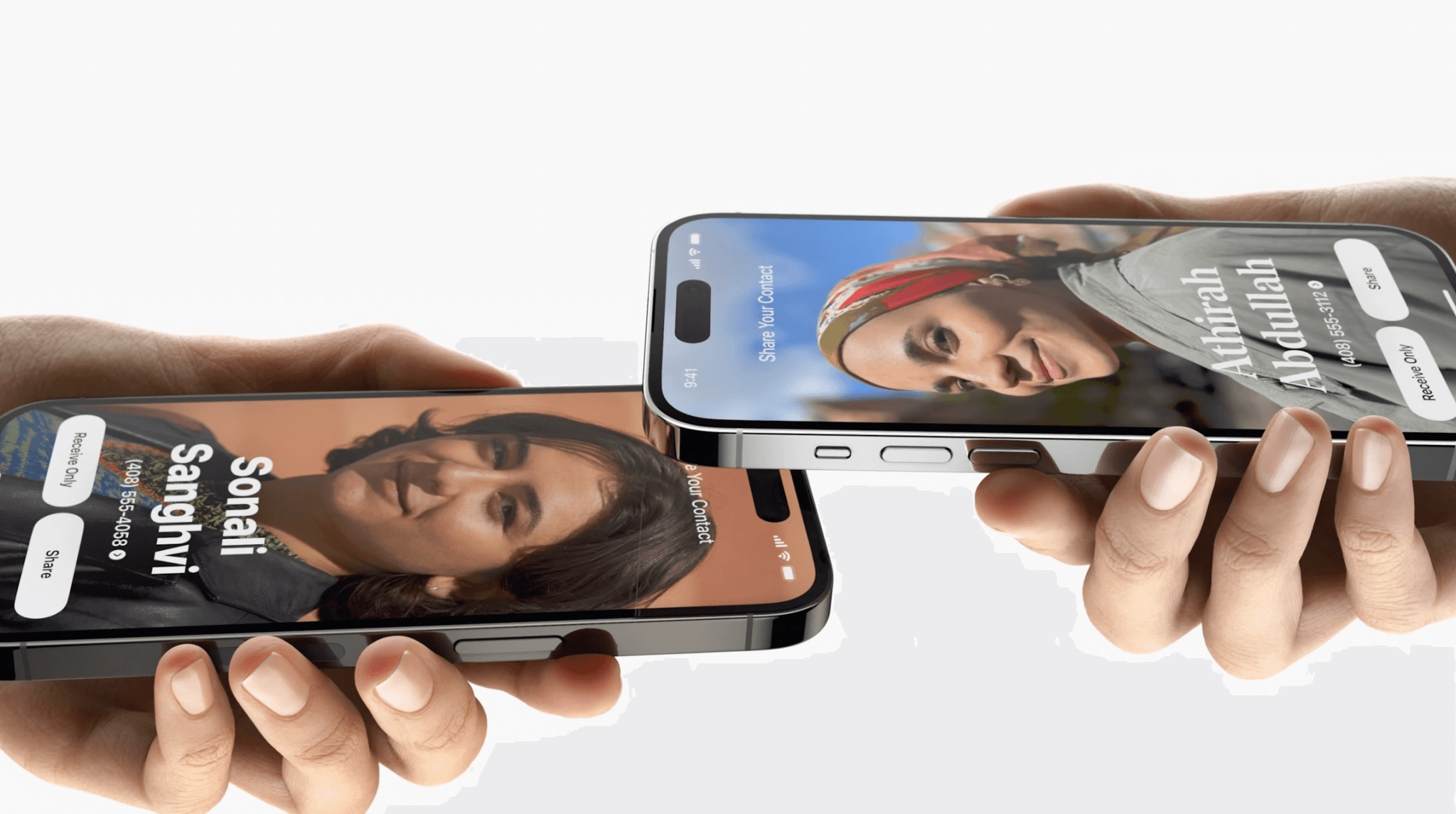
Improved Autocorrect
iOS 17 uses machine learning to better understand how you type on your phone, making autocorrect more accurate and personal. Words are temporarily underlined to show what’s been changed, and you can revert back to the original word with just a tap.
This system is only available for iPhone 12 and later in the following languages: Arabic, Dutch, English, French, German, Hebrew, Korean, Italian, Polish, Portuguese, Romanian, Spanish, and Thai. English, French, and Spanish.
Keyboard predictions
Another new keyboard-related feature is inline predictions as you type. The system predicts the words or sentences you’re typing and autocompletes them for you with a tap of the space bar. Keyboard predictions also require an iPhone 12 or later and currently only work in English.
AirPods Adaptive Audio and Faster Automatic Switching
Apple has demonstrated some great enhancements coming to AirPods. These include Adaptive Audio, which dynamically mixes Transparency and Active Noise Cancellation according to the external environment. While there are no limitations on compatible iPhone models, this feature only works with the second-generation AirPods Pro.
The same requirements apply to Faster Automatic Switching.
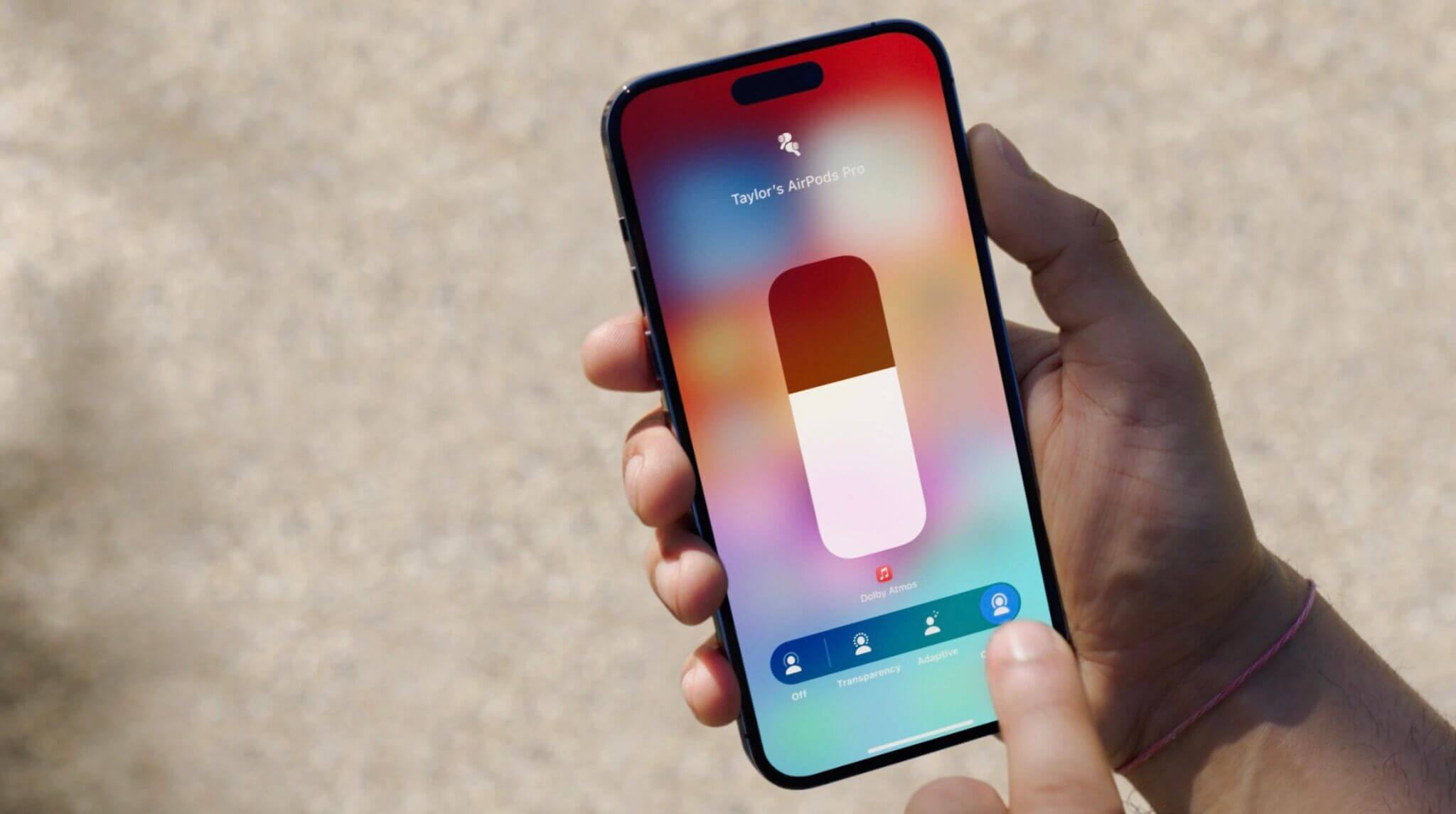
Press to mute and unmute on AirPods
During a call, you can now press the stem of your AirPods to mute or unmute a call. This feature works with third-generation AirPods and both generations of AirPods Pro. It also works with AirPods Max through Digital Crown.
New ‘Siri’ command
Since the iPhone 6s, users can talk to Siri hands-free just by saying the command “Hey Siri.” This command was later added to pretty much every Apple device and became crucial for HomePod – Apple’s smart speaker. But now, with iOS 17, macOS 14, and other updates, users no longer need to say “Hey Siri” to talk to the virtual assistant.
The new command works with any iPhone running iOS 17, but only in English for now. When it comes to AirPods, only second-generation AirPods Pro are compatible.
Siri back-to-back requests
Siri finally has back-to-back requests. This means that once you’ve activated Siri, you can ask for multiple requests without having to reactivate it. As an example, you can say, “Siri, text Emma I’m on my way,” and then, “Remind me to water the plants when I get home,” without having to say “Siri” again. This feature also only works in English.
Point and Speak
One of the new accessibility features in iOS 17 is Point and Speak, which makes it easier for people with vision disabilities to interact with physical objects that have text labels. You can point your iPhone camera at something, and then the system will read the detected texts for you. However, this feature is only available for iPhones with a LiDAR scanner (iPhone 12 Pro and newer Pro models)
Home Activity History
The new Activity History in the Home app lets you see who locked or unlocked the door – and when. It also shows recent activity for garage doors, contact sensors, and your security system. While this will work with any iPhone running iOS 17, you’ll need to update your Home app Architecture before enabling this feature.
StandBy
iPhone has a new StandBy mode with iOS 17, which displays an alternative interface with full-screen widgets when the iPhone is positioned horizontally and connected to the charger. StandBy mode is available for any iPhone with iOS 17, but only iPhone 14 Pro keeps the information on the screen all the time because of Always-on Display.



